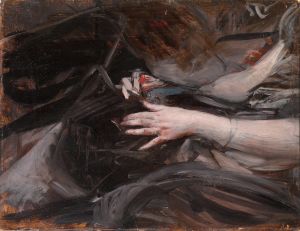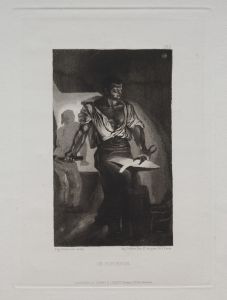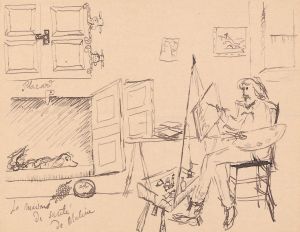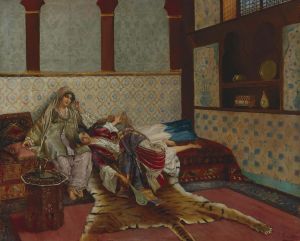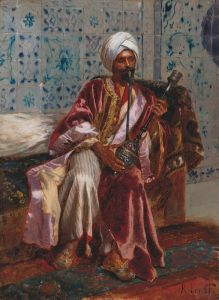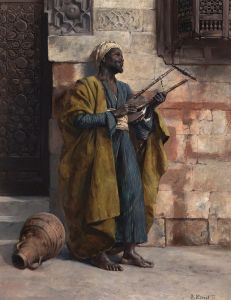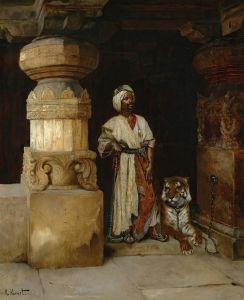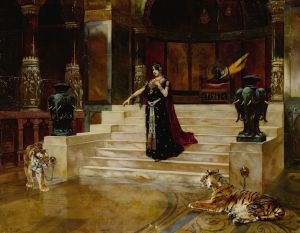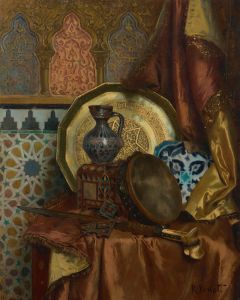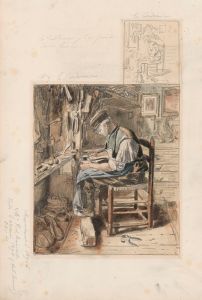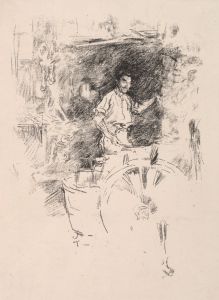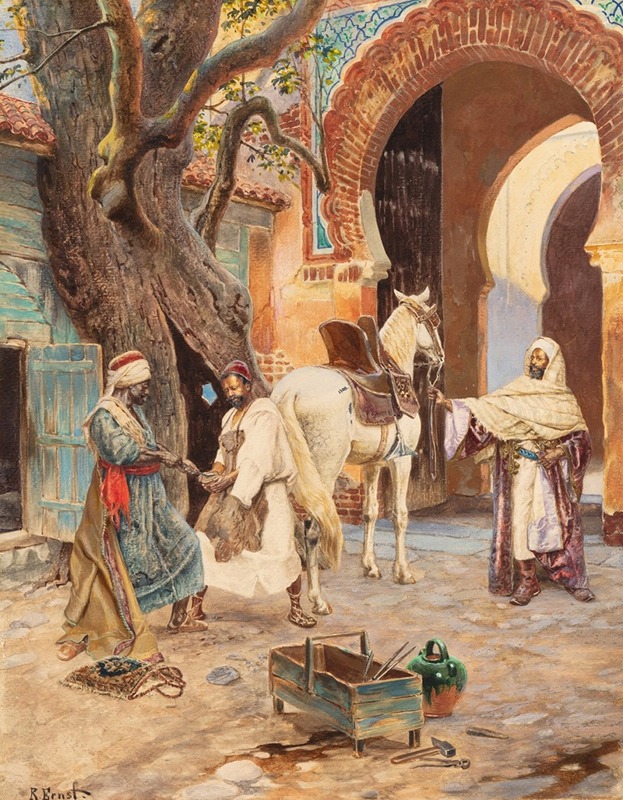
The Farrier
A hand-painted replica of Rudolf Ernst’s masterpiece The Farrier, meticulously crafted by professional artists to capture the true essence of the original. Each piece is created with museum-quality canvas and rare mineral pigments, carefully painted by experienced artists with delicate brushstrokes and rich, layered colors to perfectly recreate the texture of the original artwork. Unlike machine-printed reproductions, this hand-painted version brings the painting to life, infused with the artist’s emotions and skill in every stroke. Whether for personal collection or home decoration, it instantly elevates the artistic atmosphere of any space.
Rudolf Ernst (1854–1932) was an Austrian painter known for his detailed and vibrant Orientalist works. His paintings often depicted scenes inspired by the cultures, architecture, and daily life of the Middle East and North Africa, reflecting the 19th-century European fascination with the "Orient." Among his notable works is The Farrier, a painting that exemplifies his meticulous attention to detail and his ability to capture the atmosphere of a specific moment.
The Farrier portrays a blacksmith, or farrier, at work, shoeing a horse. The scene is set in an environment rich with architectural and decorative elements characteristic of the Islamic world, including intricate tilework, arches, and textiles. Ernst's use of vivid colors and precise brushwork brings the setting to life, showcasing his skill in rendering textures such as metal, fabric, and stone. The composition draws the viewer's eye to the central figure of the farrier, whose focused expression and physical posture convey the labor-intensive nature of his craft.
This painting is a testament to Ernst's ability to combine realism with an idealized vision of the "Orient," a hallmark of Orientalist art. While the exact location or cultural context of the scene is not specified, the details suggest that Ernst was inspired by his travels or by the accounts and imagery of others who had visited the region. His works often reflect a romanticized interpretation rather than a strictly accurate representation of the cultures he depicted.
As with many Orientalist works, The Farrier should be understood within the context of its time. The 19th century saw a surge of interest in the "exotic" East among European artists and audiences, fueled by colonial expansion, travel literature, and archaeological discoveries. While these works often celebrated the beauty and craftsmanship of the depicted cultures, they also reflected the biases and stereotypes of the period.
Rudolf Ernst's The Farrier remains an example of his artistic legacy, showcasing his technical mastery and his role in the Orientalist movement. Today, his works are appreciated for their aesthetic qualities and as historical artifacts that offer insight into the cultural attitudes of 19th-century Europe.





